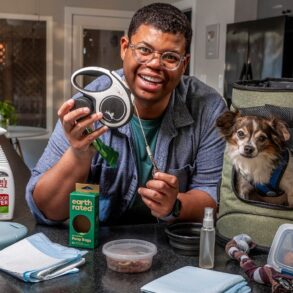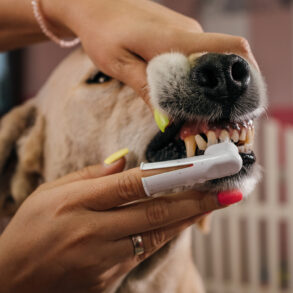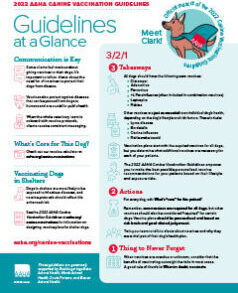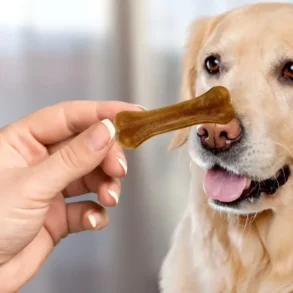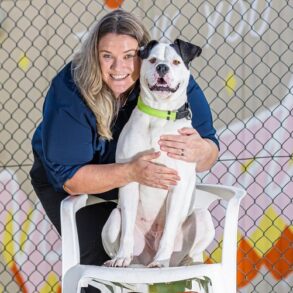
Almost three in five Americans say that their pet literally saved their life, according to new research.
A survey of 2,000 cat and dog owners revealed that 56% have been rescued by their four-legged friend in one way or another.
When asked how, one respondent shared, “I’m not sure I would be the person I am today (or even be here today) if it wasn’t for him,” while another found themselves in bad shape at the hospital, sharing, “knowing I had to get home to my babies saved me.”
Broadcast-ready version of this research story
In fact, another 56% are willing to repay the favor and would trade years off their own life so that their pet could live longer.
More than one-third of pet owners polled (34%) purposely got a pet to improve their mental health and it’s working. Almost all (95%) find that having a pet improves their mental health on a daily basis.
Prior to getting their pet, only 32% of respondents would have graded their mental health between an A- and an A+. After getting their pet, that number jumps to 71%.
Some shared that it’s the companionship that gives them the boost, saying a pet “makes me feel needed” or simply gives them support “by always being there next to me.”
Another pet owner said, “I just have to look at him to have a better outlook on life and the day. I’m so grateful to have him in my life,” and 90% of respondents agreed that their pet has the power to turn a bad day into a good one just by being there.
Conducted by Talker Research on behalf of global pet food brand Nulo the survey explored both the large and small ways our four-legged friends not only boost our mental health but become our most trusted confidants.
“My dogs Lilo and Rambo are my biggest cheerleaders—they’re always there for me, no matter what kind of day I’m having. The love and support we get from our pets is so special, and it’s incredible to see just how much they impact our mental health,” said Nulo spokesperson, eleven-time Olympic medalist Simone Biles. “Just like they take care of us, it’s our job to take care of them too.”
View this post on InstagramA post shared by SIMONE BILES (@simonebiles)
Every day, pets make their owners smile an average of 11 times and make them laugh nine times.
But what exactly causes these moments of endearment? Respondents shared some of their favorite ways their pets bring them joy on a daily basis, such as, “she likes to sleep on top of my stomach or curled up against me,” “he is goofy, loves to play and loves to demand his favorite treats” or even “when they want to dance with me.”
Results also found that when respondents are away from their pet, it takes an average of just five hours before their mental health starts to decrease, though 41% say it wanes within the first two hours.
The bond between pets and their people runs so deep that respondents are also almost twice as likely to trust their pet more over their partner (53% vs. 27%) and only 11% trust their best friend the most.
Almost two in five (38%) even trust their pet’s instincts more than their own, with one respondent underscoring how deep this trust goes; “I would have died if I didn’t go to the ER back in June, my dog alerted my husband something wasn’t right.”
Taking things a step further, 49% would sit on the toilet in front of their pet, but not their partner. Others would more comfortably fart (43%), cry (39%) or even take a shower (31%) in front of their pet over their partner.
“Whether it’s early morning training or long travel days, my dog Jane is always my constant,” said nine-time Olympic gold medalist Caeleb Dressel and Nulo spokesperson. “She lifts my spirits, keeps me grounded, and makes every day better just by being there. Our pets give us so much, and it’s up to us to make sure they get the love and care they deserve in return.”
Survey methodology:
Talker Research surveyed 2,000 cat and dog owners; the survey was commissioned by Nulo and administered and conducted online by Talker Research between Jan. 16 and Jan. 21, 2025.
We are sourcing from a non-probability frame and the two main sources we use are:
Traditional online access panels — where respondents opt-in to take part in online market research for an incentiveProgrammatic — where respondents are online and are given the option to take part in a survey to receive a virtual incentive usually related to the online activity they are engaging in
Those who did not fit the specified sample were terminated from the survey. As the survey is fielded, dynamic online sampling is used, adjusting targeting to achieve the quotas specified as part of the sampling plan.
Regardless of which sources a respondent came from, they were directed to an Online Survey, where the survey was conducted in English; a link to the questionnaire can be shared upon request. Respondents were awarded points for completing the survey. These points have a small cash-equivalent monetary value.
Cells are only reported on for analysis if they have a minimum of 80 respondents, and statistical significance is calculated at the 95% level. Data is not weighted, but quotas and other parameters are put in place to reach the desired sample.
Interviews are excluded from the final analysis if they failed quality-checking measures. This includes:
Speeders: Respondents who complete the survey in a time that is quicker than one-third of the median length of interview are disqualified as speedersOpen ends: All verbatim responses (full open-ended questions as well as other please specify options) are checked for inappropriate or irrelevant textBots: Captcha is enabled on surveys, which allows the research team to identify and disqualify botsDuplicates: Survey software has “deduping” based on digital fingerprinting, which ensures nobody is allowed to take the survey more than once
It is worth noting that this survey was only available to individuals with internet access, and the results may not be generalizable to those without internet access.
This post was originally published on this site be sure to check out more of their content.










